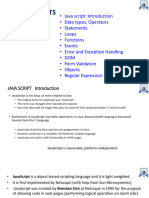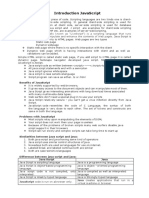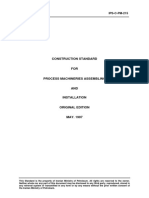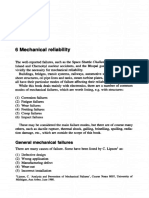0% found this document useful (0 votes)
80 views35 pagesClient Side Scripting
Chapter 3 of the document discusses Client Side Scripting using JavaScript, highlighting its features, benefits, and rules. It covers the implementation of JavaScript in HTML, including the use of popup boxes, functions, objects, and regular expressions, as well as cookies and form validation. Additionally, it explains the Document Object Model (DOM) and how to manipulate HTML elements using JavaScript methods.
Uploaded by
Hayelom Muleta GebryeCopyright
© © All Rights Reserved
We take content rights seriously. If you suspect this is your content, claim it here.
Available Formats
Download as PPTX, PDF, TXT or read online on Scribd
0% found this document useful (0 votes)
80 views35 pagesClient Side Scripting
Chapter 3 of the document discusses Client Side Scripting using JavaScript, highlighting its features, benefits, and rules. It covers the implementation of JavaScript in HTML, including the use of popup boxes, functions, objects, and regular expressions, as well as cookies and form validation. Additionally, it explains the Document Object Model (DOM) and how to manipulate HTML elements using JavaScript methods.
Uploaded by
Hayelom Muleta GebryeCopyright
© © All Rights Reserved
We take content rights seriously. If you suspect this is your content, claim it here.
Available Formats
Download as PPTX, PDF, TXT or read online on Scribd
/ 35























































































